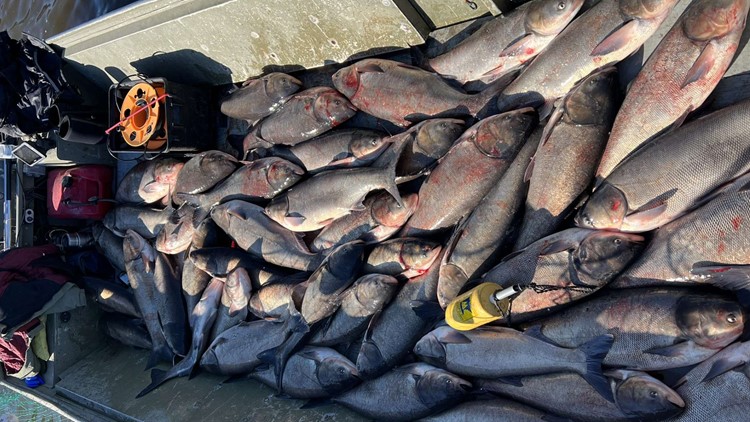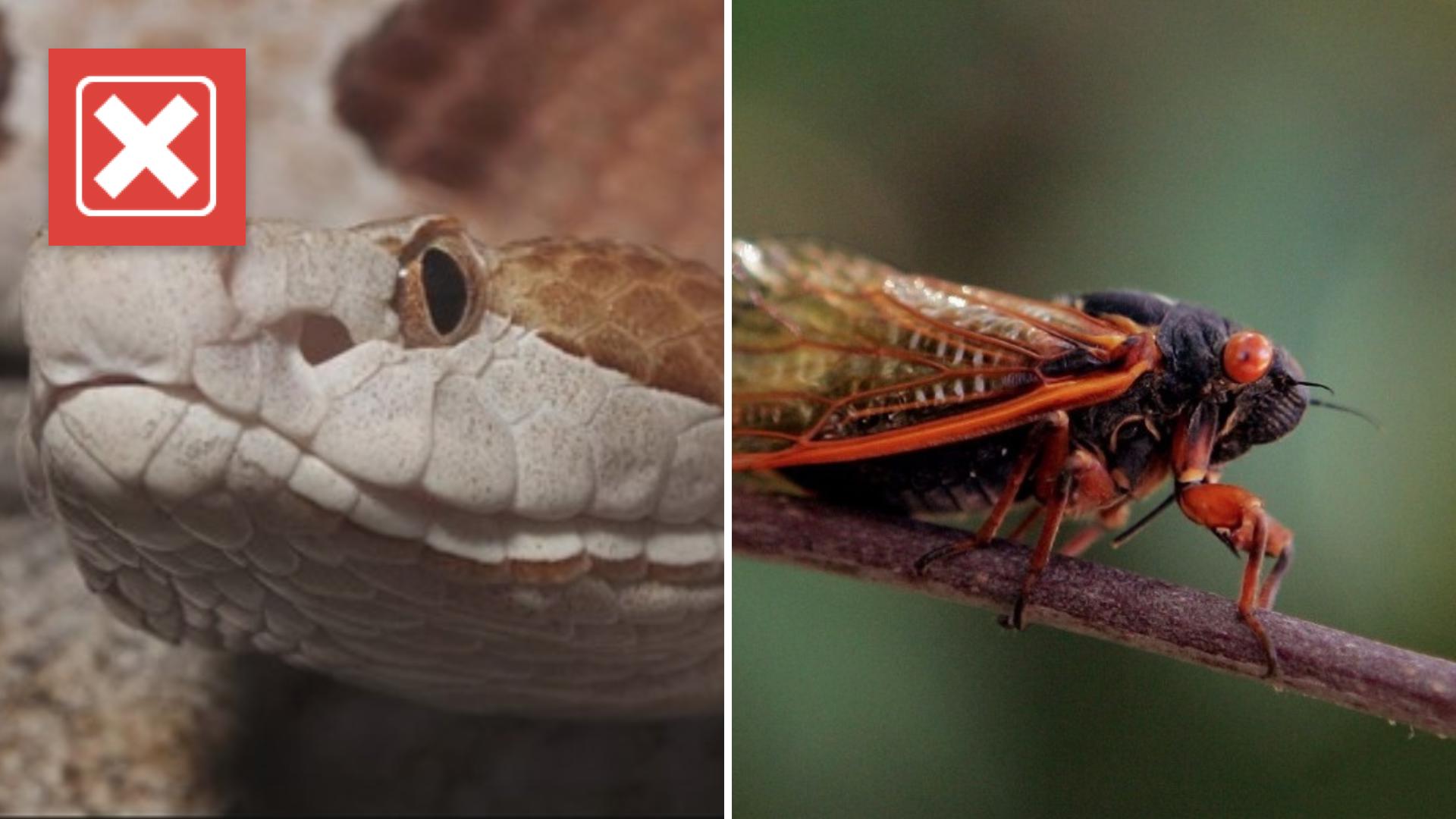TREMPEALEAU, Wis. — More than 300 invasive carp were pulled from the Mississippi River near Trempealeau, Wis., in late November, the largest single capture of the nuisance fish in Wisconsin and Minnesota waters to date.
The catch was made possible by tagging previously caught fish and throwing them back, according to a news release from the Minnesota Department of Natural Resources. The agency tracked those fish to find and capture 323 silver, grass and bighead carp, the result of partnered work with the Wisconsin Department of Natural Resources, the U.S. Geological Survey and the U.S. Fish and Wildlife Service.
The previous largest catch was about 50 fish in 2020, said Jordan Weeks, senior fisheries biologist for the Wisconsin DNR based in La Crosse.
Just before Thanksgiving, Weeks' team located a handful of tagged carp — which they call Judas fish, a reference to the disciple who betrayed the whereabouts of Jesus Christ — in the river near Trempealeau, which is about a half hour upriver from La Crosse. They informed the Minnesota DNR, which worked with contracted commercial fishers to make the catch.
"Each (capture) event, we learn a little something new about these fish and how they behave and where they're located," Weeks said.
He called invasive carp one of the biggest threats to the Mississippi River's native fish communities. All of the carp captured in the recent event were euthanized.
It's likely that heavy spring flooding along the river allowed the carp to move upstream past open dams, according to the Minnesota DNR news release.
That high water prevented the agencies from going out to do a spring carp capture, and in the fall, they had little success, Weeks said. The fish are hard to catch because they're highly attuned to boat noise and can jump over nets to evade capture, he said — making this catch a positive development in the effort to rein them in on the upper Mississippi.
Invasive carp have been a problem in the Mississippi River for years
Invasive carp have been a problem in the Mississippi River for decades. First imported to the U.S. in the 1970s to control weeds in aquaculture farms, the fish escaped into the river in Arkansas and began working their way upward and into connecting rivers, streams and lakes.
Today, individual invasive carp have been caught as far upstream as the Twin Cities metro area, according to the Minnesota DNR. Silver carp, grass carp and bighead carp have been documented in the upper river system for years, and a study earlier this year from the USGS found that black carp are also naturally reproducing in the river basin.
Federal and state agencies are spending hundreds of millions of dollars to keep the fish out of the Great Lakes, including an upgrade to a lock and dam system south of Chicago meant to block them from invading Lake Michigan.
Carp can grow up to 100 pounds and are known for reproducing quickly, laying hundreds of thousands of eggs at a time to quickly increase their numbers.
In high densities, they can wreak havoc on native fish populations in rivers and lakes because they outcompete other fish for food and space. Weeks compared food availability in a body of water that's been taken over by carp to an entire football team trying to share a single pizza.
The fish are also believed to degrade water quality, which can hurt sensitive organisms like freshwater mussels. And when they jump out of the water to avoid capture, they can startle — or injure — boaters and water skiers.
Although it's not known exactly how many invasive carp are in the upper Mississippi, Weeks said it's believed to have "very low" densities compared to the lower river, where commercial fishers can haul in millions of pounds of the fish annually.
The goal is to control their numbers in the upper river and prohibit them from successfully reproducing.
"I'm not sure if we're going to be able to achieve that or not," he said. "Time will tell."
This story is a product of the Mississippi River Basin Ag & Water Desk, an independent reporting network based at the University of Missouri in partnership with Report for America, with major funding from the Walton Family Foundation.
Top St. Louis headlines
Get the latest news and details throughout the St. Louis area from 5 On Your Side broadcasts here.



